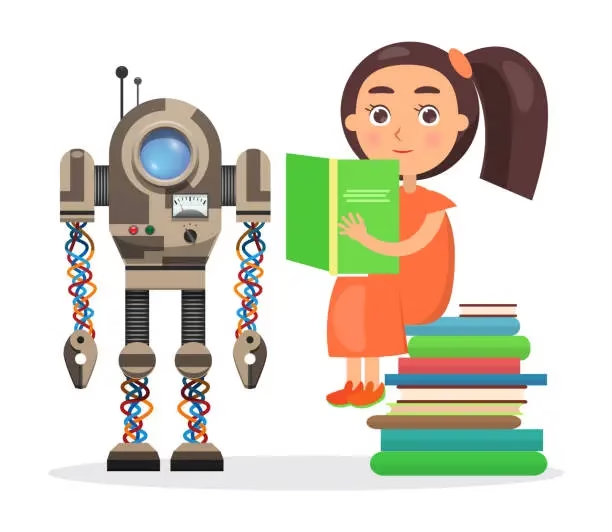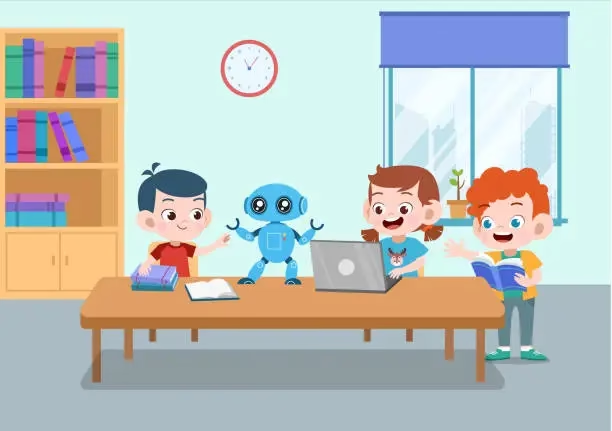Writing a children’s book with AI is a thrilling and creative journey, but it also comes with challenges. With the rise of artificial intelligence (AI), the process has become more accessible and efficient for both experienced writers and beginners. With the help of advanced artificial intelligence, you can easily craft delightful stories, and desirable characters and build imaginative worlds that attract young readers.
In this article, we’ll explore how to create children’s books with AI technology while keeping the process creative and maintaining a human touch. From generating compelling text to creating vibrant images, we’ll cover everything you need to bring your story to life by using AI.

Why Use AI to Write a Children’s Book?
AI tools boost your creativity and provide access to authentic content. These tools are acceptable and meet your needs helping to generate fresh ideas. AI tools like ChatGPT, Jasper, and Sudo Write offer diverse features for brainstorming, drafting, and editing. These tools create exciting plot twists, and loveable characters, and even refine rhymes or dialogue. However, it’s important to remember that AI is a powerful assistant, it must complement, not replace human creativity. The best children’s books that blend AI are those that combine the efficiency of AI with the warmth, emotion, and unique touch of human storytelling.
Step-by-Step to Writing a Children’s Book with AI
Step 1: Target Your Audience
Before starting to write, it’s essential to target your audience. To write the best children’s book of all time and identify age because it greatly depends on the age group, with various preferences, vocabulary levels, and themes. Considering your audience, you can easily select the topic and shape the tone and engagement level of your book.
Audience
- Toddlers (0-3 years): Simple, repetitive text with bright and engaging illustrations.
- Early Readers (4-7 years)): Short sentences, basic vocabulary, and interactive plots.
- Middle-Grade (8-12 years)): Longer stories with well-developed themes and characters.
How AI Helps?
AI tools can help in tailoring your content ensuring language by analyzing age-appropriate that even providing suggestions and ensuring your writing piece resonates with the right audience.
Step 2: Choose Your Topic and Research
Now choose a topic that interests you and is suitable for children. By using AI tools like chatGPT to research and gather exact information from various perspectives on your chosen subject. Make outlines and define the main plot, and key character, and deliver the message that you want to convey.
Step 3: Brainstorm Ideas with AI
If you’re struggling to come up with a story idea, AI is a great tool to spark your imagination. For instance, AI can create creative prompts and assist you in refining them into a captivating story.
- “Give me a list of fun, unique ideas for a children’s book about animals.”
- “Suggest heartwarming story themes for a book about friendship and adventure.”
AI can provide a starting point, but it’s essential to refine and personalize the ideas with the touch of your own emotions and style and make a special story for children.
Step 4: Create Memorable Characters
Relatable and memorable characters are the heart of any great Children’s book. When using AI to write a book, you can generate character profiles, including names, personalities, and backstories, to bring your story to life. For example:
- “Create a quirky, adventurous rabbit character for a children’s book.”
- “Suggest traits for a shy but brave protagonist.”
Moreover, an AI children’s book illustration generator, allows you to visualize your character and leave a long-lasting impression.
Themes to make an authentic and engaging story for your readers.
Step 5: Write the Story with AI Assistance
AI allows you to quickly generate a first draft of your story. With the best AI for writing children’s books, you can input your plot outline and gain an unforgettable narrative. For example:
- Write a 500-word story about a dragon who’s afraid of fire.
- Create a rhyming story about a lost teddy bear.
While AI for writing children’s books can produce a strong foundation, careful review and editing are essential, to maintain natural flow and resonate with your audience.
Step 6: Add a Human Touch
AI-generated content can sometimes feel robotic, but your touch makes your unique and impressive story. If you’re wondering Is writing children’s books profitable? The main key to making an engaging story.
- Use humor and emotion: Kids love stories that make them laugh or feel something.
- Incorporate life lessons: Teach moral values like kindness, courage, or perseverance to add depth.
- Read aloud: Ensure the text is rhythmic and easy to read.
Remember, the best children’s books craft personal and heartfelt stories of human creativity.
Step 7: Illustrate Your Book
Illustrations are a vital part of children’s books, bringing stories with vibrant visuals. While AI tools such as DALL·E or Canva and an AI children’s book illustration generator can produce eye-catching images, consider hiring a professional illustrator for unique, hand-drawn illustrations. Combining AI-generated and human creativity can help your book stand out and create a memorable story.
Step 8: Edit and Polish
Artificial Intelligence can help with grammar checks and sentence structure, making the editing process more efficient. By using AI grammar checkers and rephrasing, you can access clear and fluent writing. However, human editing is very essential to ensure the story to keep a natural flow and emotional depth. Read your story multiple times, and getting feedback from parents, teachers, or children, and achieve your writing mission.
Step 9: Publish and Promote
Once your book is ready, you can self-publish through different platforms like Amazon Kindle Direct Publishing (KDP) or IngramSpark. Use AI tools for writing social media posts designing promotional materials and creating a strategic marketing plan to help your book reach a wider audience.

Tips for Success
- Simplicity: When creating Children’s books written by AI, ensure the language is easy to understand and visually appealing and maintain its simplicity.
- Originality: AI is supportive and has the latest tools, but you must add your voice and create original content.
- Test your story: Share it with children and observe their reactions, making improvements as needed to build your trust and enhance your experience.
Conclusion
Writing a children’s book using AI is a fast and easy process that saves your time and sparks your creativity, but the heart of the story should always come from you. By combining the power of AI’s efficiency with your imagination, you can create a captivating book that delights young readers and stands out in the competitive world of children’s literature.
So, grab your ideas, harness the power of AI tools, and start writing the next cherished children’s classic!

